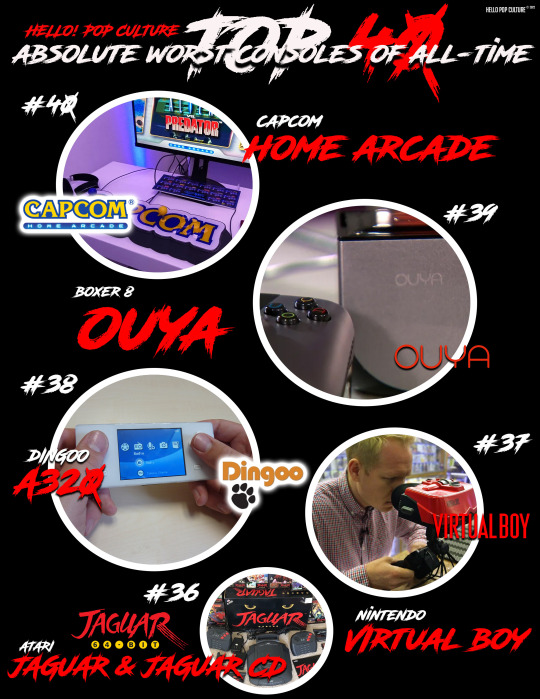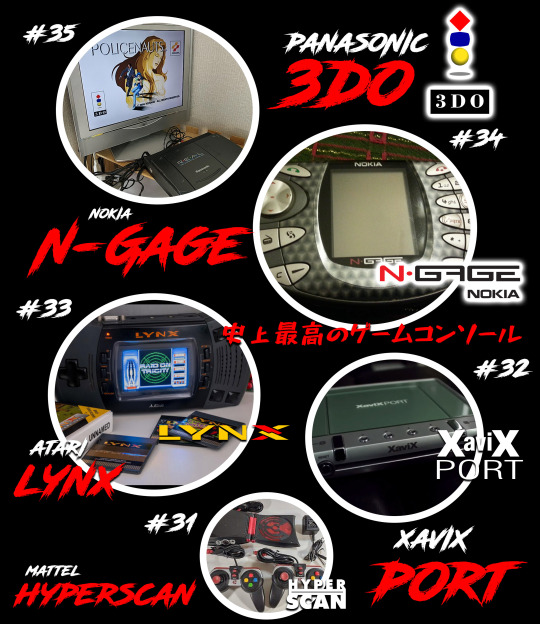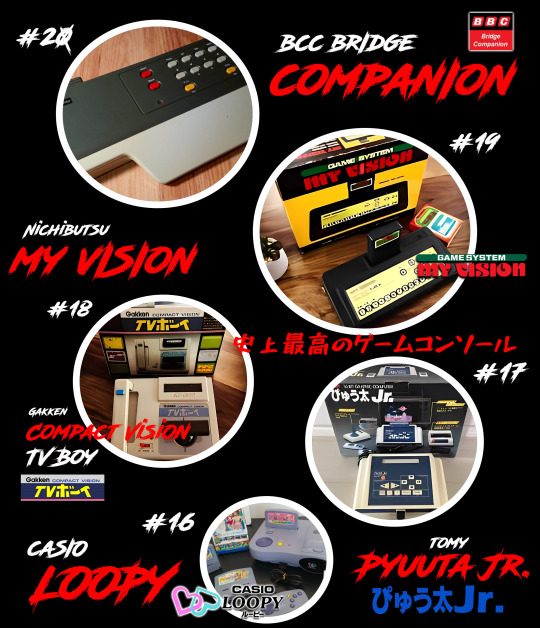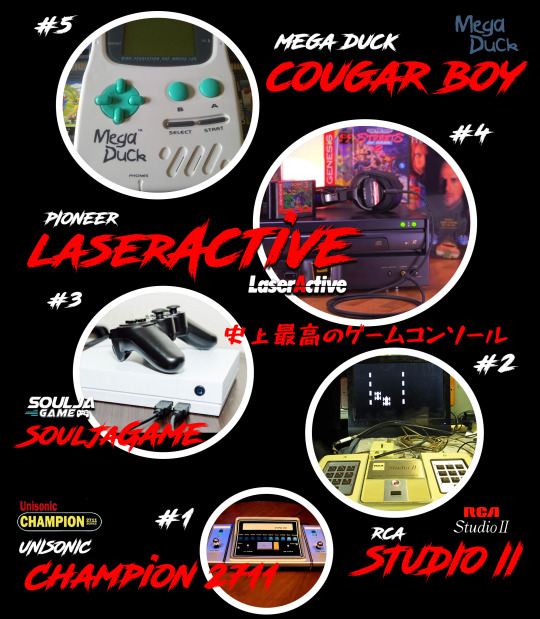#Microcomputer Games
Explore tagged Tumblr posts
Text
Antstream Arcade Adds Two Microcomputer Classics
Antstream Arcade the world’s largest retro gaming cloud platform, has added two brand new microcomputer games to its already massive game library. In this article, we are going to go over the two games and whether or not they’re worth checking out. One game will grab the attention of Amstrad CPC fans and other will grab the attention of MSX fans. Inside Outing (Amstrad CPC): The first game on…
0 notes
Text

TSR-80 Microcomputer (1982)
#TSR-80 microcomputer#vintage computers#80s christmas#vintage video games#radio shack#vintage gaming#vintage PCs#80s arcade#tandy corporation#1980s#1982
379 notes
·
View notes
Text

UK 1982
#UK1982#COMPUTERS FOR ALL#ACTION#GAMBLING#BBC#PUCK CHASE#MASTERMIND#STARTREK#STARWARS#BLACKJACK#ALIEN INVASION#SIMON FORTUNE#BBC MICROCOMPUTER GAMES PACK
11 notes
·
View notes
Text
Atari game cartridge prices - vendor price and suggested retail - from 1983.
I found this on some miraculously still-live forum from 2004.


These are in dollars, so to get the 2025 price, multiply everything by 2.24.
You will note that new games now are about the same price as they were then. They just lose value a lot faster now.
Also back then, a lot of these were made by like 2 guys over 6 months. The programming ecosystem has changed radically, and yet we still expect games to be $60.
I'm not saying we're wrong, or even that the newest Ubisoft sandbox made by 1000 people over 3 years is inherently more fun to play than Star Raiders (bad example, I suppose; Star Raiders rocks, and was also the equivalent of $90 when it came out. And Ubisoft needs to stop killing people to program realistic grass in a game most people will play for 2 hours and go "meh").
It's just interesting to reflect on the changes, and appreciate how good we have it.
Plus like we can steal EVERYTHING real easy now. That used to require meeting shady people in dank alleys, or being friends with a lunatic who was almost literally Doc Brown, but about 8-bit video games. Minus the parts where he's charming and funny and not a terrifying creep.
5 notes
·
View notes
Text

Top 47K - Dragon's Lair + Cruelty Squad
Join the HG101 gang as they discuss and rank the classic laserdisc arcade by Disney’s weirdest animator, and an indie throwback FPS.
#dragon's lair#advanced microcomputer systems#arcade#don bluth#fmv games#cruelty squad#consumer softproducts#microsoft windows#first person shooter#hardcore gaming 101#podcast#top 47858 games of all time#video games#retro games
11 notes
·
View notes
Text

2 notes
·
View notes
Text
Interactive Fully-Animated Cartoons (1983/84/91)

#80s#90s#dragons lair#space ace#dragons lair 2#time warp#arcade games#video games#laser disc#advanced microcomputer systems#sullivan bluth interactive#don bluth#interactive movies
180 notes
·
View notes
Text

What to do after you hit return - Book of Basic Games
0 notes
Text








#Top 40 Absolute Worst Consoles of All-Time#Unisonic Champion 2711#RCA Studio II#SOULJA GAME#Pioneer Laseractive#Mega Duck Cougar Boy#Bateske Arduboy#Koei PasoGo#Systema 2000 Hartung Game Master#MGA Game Wizard#Bit Corporation Gamate#Tiger Telematics#Design Master Senshi Mangajukuu#APF MP-1000 Microcomputer#The Imagination Machine#Tiger Telematics Gizmondo#Tiger R-Zone#Casio Loopy#Tomy Pyuuta#Tomy Pyuuta Jr.#Nichibutsu My Vision#Tectoy Zeebo#BCC Bridge Companion#Funtech Super A'Can#Capcom Home Arcade#Ouya#Memorex VIS#Apple Pippin#Bandai Terebikko#Action Max
0 notes
Text

TRS-80 Microcomputer News May 1983
Radio Shack's newest computer yet featured on the cover of this issue. In "View from the 7th Floor," Jon Shirley promised the company wasn't quite done yet with its introductions. One tangential part of the "Home Issue" could have been a description of the online games available on CompuServe.
92 notes
·
View notes
Text
OK, but paddles (i.e. dialing left and right on circular inputs) are genuinely a good control scheme for some games (e.g. Breakout, Breakout-likes... Tempest, I think it's a good one for Tempest since clockwise is always clockwise and anti-clockwise is always counterclockwise rather than sometimes left being right and right being left if you're at the top of the web rather than the bottom.
All I'm saying is that as someone whose first console was a Mattel Intellivision, the sorts of control schemes that mobile developers would have us believe are reasonable ways of playing an action game on your phone are starting to feel eerily familiar.
#Atari 2600 was my first#And we had a fucking paddle addon#To supplement the default 8 directional joystick controller#For games that benefitted from it#c64 was my next which didn't have that adon but did have at least one game where the official control used two joysticks#and suggested using your foot for the second#But also the system was a keyboard because 80s microcomputer so you had a bunch of games that used the keyboard
928 notes
·
View notes
Text




🎄💾🗓️ Day 2: Retrocomputing Advent Calendar brings us the TRS-80! 🎄💾🗓️
Released in 1977, the TRS-80 (also lovingly called the "Trash-80") was a popular personal computer by Radio Shack and Tandy Corporation. Designed for affordability and approachability, it was one of the first mass-market computers, bringing computers into homes, schools, and small businesses.
Powered by a Zilog Z80 processor running at 1.77 MHz, the TRS-80 Model I came with 4KB of RAM (expandable to 16KB) and an 8KB ROM, preloaded with the Microsoft BASIC programming language. Its black-and-white display supported a resolution of 64x16 characters. It used external cassette tapes for storage, which offered a low-cost solution before floppy drives became more available.
The TRS-80's also had an ecosystem. Radio Shack offered complete setups, monitors, printers, and software - making it easy for beginners. The machine became a favorite for hobbyists and programmers, popularizing early text-based adventure games, educational software, and business applications.
Eventually overtaken by the IBM PC and Apple systems, the TRS-80's legacy lives on!
I had some so-so photos, but these from the Smithsonian are the best I've seen, along with their section on their site -
Have TRS-80 memories, or retro computing memories? Post’em up in the comments, or post yours on socialz’ and tag them #retrocomputing #firstcomputer #electronics see you back here tomorrow!
116 notes
·
View notes
Text
i am trying to play this

but the process of installing it. mein gott
commodore emulation on a handheld is possible but i can't find a comprehensive tutorial for my situation (anbernic 40 running muOS). i am engaged in mortal fucking combat with retroarch which keeps saying FEED ME KICKSTART ROMS BOY. kickstarts from what i can tell are little bonus files that tell the emulator how to process big deal software. so i was like Fine. you can have those. but the muOS file structure is uniquely odd (especially compared to windows) and the folder where the kickstarts should live does not exist. i think the solution here is to fiddle around with another OS or use an emulator that doesn’t rely on retroarch
ONTO OTHER PROBLEMS! mind walker is only available in .adf. the reddit jury’s general consensus seems to be that .adf is the most annoying commodore rom format due to the load times (long) and emulator compatibility (variable). i have no idea if some brave angel with a neocities site has created an adf -> hdf converter. worst case scenario if the adf rom doesn't work would involve nixing the handheld plan entirely and pivoting to windows emu (more documentation and much easier to troubleshoot). there is a way to screenshare from PC but it wouldn't feel true to the vision. i am desperate to make this work on handheld if at all possible. dunno why. the idea of a portable geometric mad scientist game is just supremely appealing to me on so many levels. if i manage to get this thang up and running i will be so happy. ONWARDS!
35 notes
·
View notes
Text

UK 1982
#UK1982#COMPUTERS FOR ALL#RETAIL#ACTION#BBC#BEEBTREK#BBC MICROCOMPUTER GAMES PACK#STARWARS#BLACKJACK#ALIEN INVASION#SIMON FORTUNE#STARTREK#PUCK CHASE#MASTERMIND
11 notes
·
View notes
Text








Enterprise (1984) by David Woodfield, UK. Enterprise won the European Micromouse competition in 1984 and 1985 and the UK competition in 1986.
"At last in Copenhagen, at Euromicro 1984, Britain won the title back in the shape of 'Enterprise', grandson of Thumper. The shortest path was seventy squares in length, covered in an amazing twenty-seven seconds. David Woodfield (Enterprise) and Alan Dibley (Thezeus-5) won travel prizes donated by the Japan Science Foundation to join teams from Finland and Germany in the Japanese 'All World' contest in Tsukuba, held in August 1985." – Alternative Robotics: Robat and Micromouse – the Cybernetic Challenge, by Professor John Billingsley, Practical Electronics, July 1986.
At the 1985 World Micromouse Contest held in Tsukuba '85, Japan, Enterprise gained 7th place (40.91 secs) and also won the 'Science and Technology Museum Award'. "The award was given in particular for the hardware aspects. It is a lightweight three-wheeled mouse weighing 580g. Both the two driving wheels and the steering wheel are DC motors, and the steering wheel is directly connected to a rotary encoder." – Mouse: Journal of the Japan Micromouse Association, September 1985.
"A CMOS processor, the NSC800, provides the brain power along with 2k EPROM and 2k RAM. The NSC800 is based upon the Z80 processor. Dave was not impressed with this processor due to a buggy instruction set. Development was, however, made easier by the ready availability at that time of a Sharp microcomputer based on the Z80. Wall sensing is achieved by means of seven top-down reflective IR sensors, three on each side and one out front. these sensors are pulsed for about 25us every 1.25mm of forward travel. The pulsing is triggered by the front wheel mounted odometry sensor. Sensor outputs are AC coupled and high-pass filtered before being captured 20us after the pulse start. Energy is provided by 1/2AA NiCd cells giving a typical running time of 30 minutes. The drive train uses two motors with separate control circuits for each. D/A convertors provide analogue signals to set the motor speed." – Pete Harrison.
In 2001, Enterprise appeared in Techno Games, a British TV series that ran from 2000 to 2003. "It performed spectacularly well, winning the whole competition as well beating its opponent. … It shot out of the starting position in rapid time and never went straight into a dead end. Flawlessly, Enterprise darted around the maze into the centre at the incredibly quick time of 15.03 seconds, taking the Gold Medal. … For unknown reasons the round "head" of Enterprise is removed during its run." – Enterprise, Techno Games Wiki.
The video is an excerpt from "The first World Micromouse Contest in Tsubuka, Japan, August 1985 [2/2]."
10 notes
·
View notes
Text






VICs that are not 20
My exhibit at Vintage Computer Festival Southwest 2023 went well. It was a major lift to drive it all out to Texas in summer, but the results were worth it. I got to meet a whole different group of the vintage computer community, and share my esoteric VICs with them. Seems like alot of people enjoyed talking with me, trying out the games, and even programming in BASIC. My exhibit even won the award for Best Microcomputer.
Items on display included:
Rainbow label VIC-20
Early American VIC-20
Japanese VIC-1001
Prototype VIC-20 aka the "Brown Board"
Prototype 16K VIC-20 plus a variety of expansions, peripherals, and software. I filled my trunk to the brim with items for my exhibit.
Special thanks go out to @ms-dos5 for helping with setup and breakdown of my exhibit, as well as demonstrating many of my exhibit machines by playing some of the supplied video games. I was glad to finally meet @techav who had the table next to mine, keeping extra sets of eyes on each others tables throughout the weekend.
#vcfsw2023#vcf southwest 2023#vintage computer festival southwest 2023#commodorez goes to vcfsw 2023#commodore#vic-20#vic 20#commodore vic 20
171 notes
·
View notes